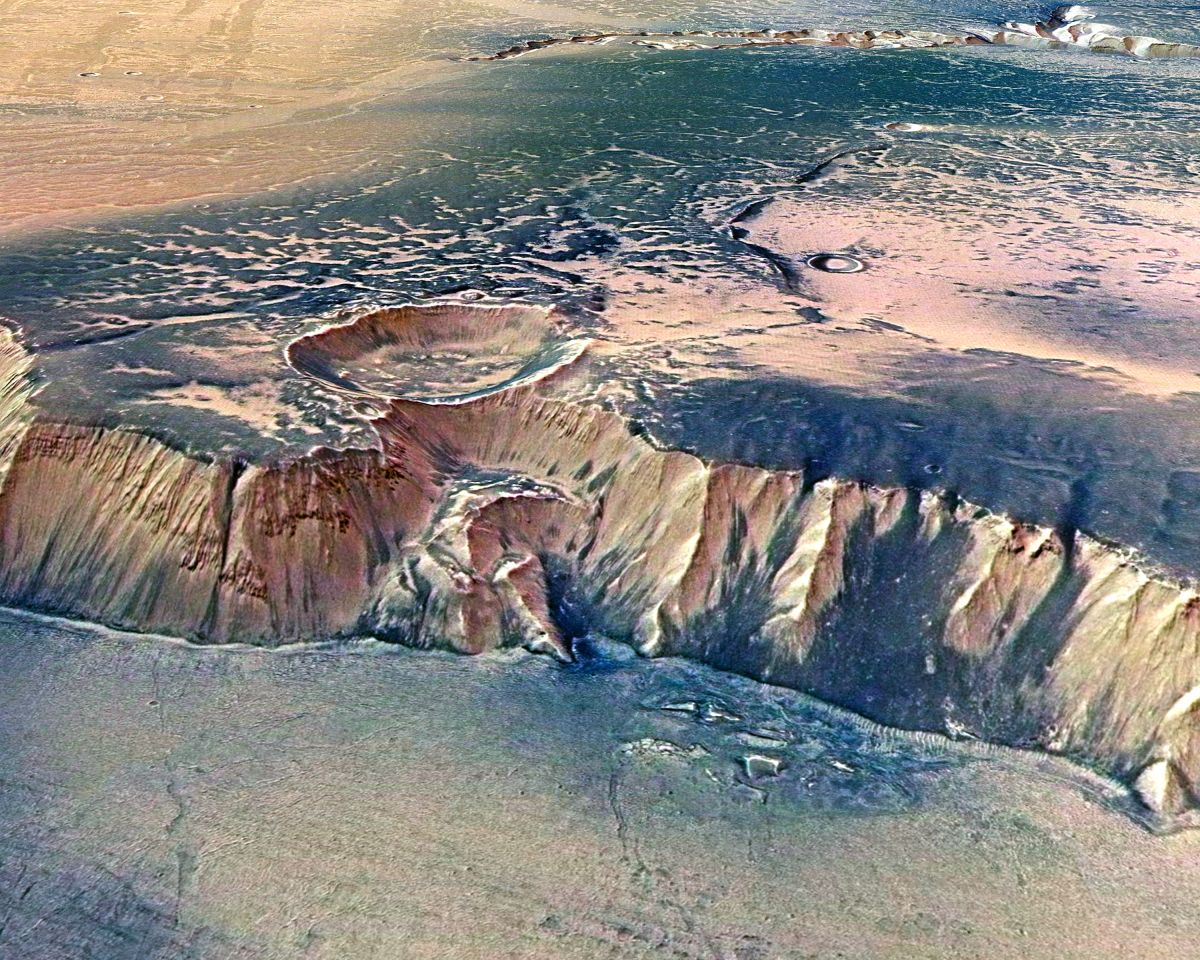
Researchers say they are conducting research to understand what happened to the water that was once abundant on the Red Planet.
Photo: ESA / Guide / Getty Images
New data from the European Space Agency’s ExoMars Trace Gas Orbiter (TGO) and the Russian company Roscosmos’ FREND Fine Resolution Epidermal Neutron Detector for mapping hydrogen on the surface of Mars. A “significant amount of water” was discovered in the 3,000-kilometer Walls Marineris Valley, the largest known solar system, Ten times longer and five times deeper than Earth’s Grand Canyon.
After discovering unusually high levels of hydrogen in an area the size of the Netherlands in the center of the Walls Marineris, researchers now say that 40% of the material near the surface of this 41,000-square-kilometer area may have been ice or water. Minerals provide a new way to find precious materials in a seemingly arid world.
Trace Case Orbiter (TGO)
With TGO, scientists can Look up a meter below this layer of dust and see what is really happening on the surface of Mars, above all, Discover water-filled “oases” that previous instruments could not detect“, Said Igor Mitrofanov of the Space Research Institute of the Russian Academy of Sciences in Moscow (Russia)., In a press release.
“We found it The central part of the Valles Marineris is filled with water, More water than we expected, “said Alexei Malakov, co-author of the study, a scientist at the Russian Academy of Sciences’ Space Research Institute. “It’s like a permanent frost on Earth, with water and ice lasting permanently under dry soil due to constant low temperatures,” he added.
In search of water that once increased on Mars
This finding reflects the exciting possibilities for exploring Mars. This is not surprising: manned missions to Mars will not be far from the surface in the future, at least to meet water near the equator. The current discovery is accompanied by various discoveries that unravel the secrets that the Red Planet has hidden.
An article in Science magazine in October confirmed this The Jessero crater on Mars was once an lake. The images returned by NASA’s diligence helped the discovery. Last year, other research work showed that there are three groundwater lakes at the South Pole of the Red Planet.
“To know more about how and where water is on Mars, it is necessary to understand what happened to the rising water on Mars at one time, and to search for habitable environments, possible signs of past life, and organic matter from the early days of Mars.” Exomarce Trace Case Orbiter Said project scientist Colin Wilson.
read more:
NASA confirms the launch of the James Webb Telescope on December 24
Russia plans to build more Soyuz spacecraft to promote space tourism




